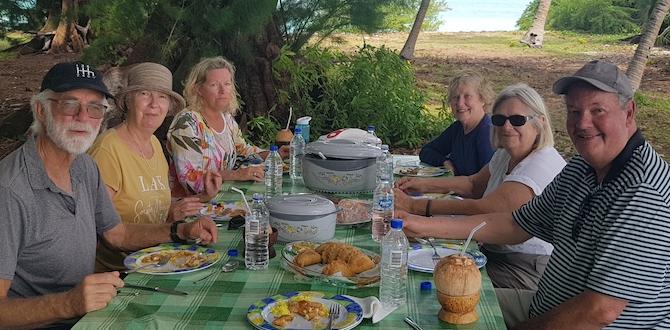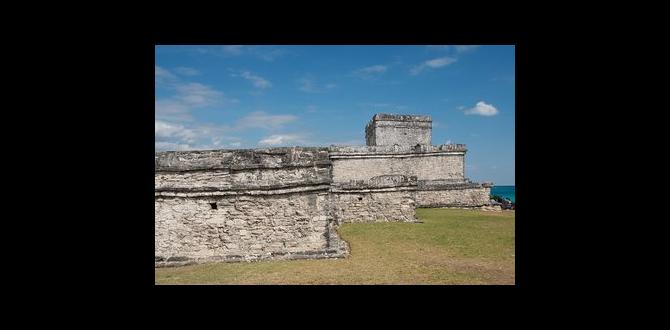Your 2-week Austria itinerary is your genius plan to experience imperial cities, stunning Alps, and charming villages with ease. This guide breaks down the perfect route for a memorable trip, ensuring you capture the essence of Austria without feeling rushed.
Planning a trip to Austria can feel like a grand undertaking, especially when you want to see as much as possible in just two weeks. Many first-time visitors worry about missing out on key sights or spending too much time traveling between places. It’s a common traveler’s dilemma: how to fit the magic of Austria—from its imperial history to its breathtaking natural beauty—into a manageable timeframe. But don’t worry! We’ve crafted a smart, step-by-step travel plan designed for ease and enjoyment. Get ready to discover Austria’s treasures with confidence.
Frequently Asked Questions About Traveling Austria for 2 Weeks
What is the best way to travel around Austria for 2 weeks?
For a 2-week trip, a combination of Austria’s excellent public transport system (trains and buses) is ideal. Consider purchasing an ÖBB (Austrian Federal Railways) travel pass if you plan on frequent train journeys. Renting a car can be beneficial if you plan to explore more remote Alpine regions, but within cities, public transport is usually more convenient and cost-effective.
Is 2 weeks enough time to see Austria?
Yes, 2 weeks is a fantastic amount of time to get a comprehensive taste of Austria. This itinerary focuses on major highlights and a few charming smaller towns, allowing for a good balance of iconic experiences and relaxed exploration without feeling overly rushed. You’ll see imperial history, stunning nature, and vibrant culture.
What are the must-see cities in Austria for a 2-week trip?
The absolute must-see cities are Vienna, Salzburg, and Innsbruck. This itinerary includes extensive time in these capitals of culture, music, and mountains. We also recommend including a charming smaller town like Hallstatt or a scenic region for a more diverse experience.
What should I pack for a 2-week trip to Austria?
Pack versatile clothing layers. Comfortable walking shoes are essential for exploring cities and hiking. Include smart casual outfits for evenings in Vienna or Salzburg. Depending on the season, pack rain gear, a warm jacket, and sun protection. For parents, remember essentials like compact strollers and any necessary personal care items, including adult care products or child diapers if needed for young children on long journeys, ensuring comfort for everyone.
How much money should I budget for 2 weeks in Austria?
Budgeting depends on your travel style. A mid-range budget for 2 weeks might be around €150-€250 per person per day, covering accommodation, food, transport, and activities. This can be adjusted up or down based on your preferences for luxury or budget-friendly options. Booking accommodation and trains in advance can help save money.
When is the best time to visit Austria for this itinerary?
The best times to visit for this itinerary are late spring (May-June) and early autumn (September-October). The weather is generally pleasant, crowds are smaller than in peak summer, and you get beautiful scenery. Summer (July-August) is also popular but busier and hotter. Winter offers a magical experience, especially for Christmas markets, but some mountain activities might be limited.
Your Genius 2 Weeks Austria Itinerary: A Perfect Blend of Culture & Nature
This 14-day Austria itinerary is designed to give you an unforgettable experience, blending imperial grandeur with stunning natural beauty. We’ll journey from the magnificent capital of Vienna to the musical heart of Salzburg and the dramatic peaks of Tyrol, adding in charming stops along the way. Think elegant palaces, classical music, fairy-tale villages, and breathtaking Alpine vistas. Whether you’re traveling solo, as a couple, or with family (and sometimes that includes packing essentials like nighttime pants for kids or adult briefs for peace of mind on long travel days), this plan ensures comfort and ease.
Days 1-4: Vienna – Imperial Grandeur & Artistic Soul
Your Austrian adventure begins in Vienna, the former heartland of the Habsburg Empire. This city is a treasure trove of history, art, and music. You’ll need at least three full days to scratch the surface of its imperial palaces, vibrant café culture, and world-class museums.
Where to Stay: Vienna
Look for hotels or apartments in the Inner Stadt (1st district) for easy access to major attractions, or consider areas like Leopoldstadt (2nd district) or Mariahilf (6th district) for a slightly more local feel and potentially better value.
Getting Around: Vienna
Vienna has an exceptional public transport system. The U-Bahn (subway), trams, and buses are efficient and easy to navigate. Consider purchasing a Vienna Pass for entry to attractions and public transport, or a multi-day VORTEILScard for discounted tickets.
Must-Do Activities in Vienna:
- Schönbrunn Palace: Explore the summer residence of the Habsburgs. Don’t miss the Imperial Tour and the gardens.
- Hofburg Palace: Visit the Imperial Apartments, the Sisi Museum, and the Imperial Silver Collection.
- St. Stephen’s Cathedral: Climb the South Tower for panoramic city views.
- Belvedere Palace: Admire Gustav Klimt’s “The Kiss” and enjoy the stunning Baroque architecture.
- MuseumsQuartier: Dive into art and culture at institutions like the Leopold Museum and MUMOK.
- Naschmarkt: Sample local delicacies and browse unique stalls at Vienna’s most famous market.
- Prater Park: Ride the iconic Giant Ferris Wheel for another perspective of the city.
- Attend a classical concert: Experience Vienna’s musical heritage firsthand.
Food Highlights in Vienna:
Savor Wiener Schnitzel, Sachertorte (chocolate cake), Goulash, and enjoy coffee house culture. Look for traditional Gasthäuser for authentic meals.
Days 5-6: Salzburg – The Sound of Music & Baroque Charm
Next, we take a scenic train journey (approx. 2.5-3 hours) west to Salzburg, the birthplace of Mozart and the setting for “The Sound of Music.” The city enchantingly blends Baroque architecture with dramatic mountain backdrops.
Where to Stay: Salzburg
The Old Town (Altstadt) is charming and walkable, but staying just outside the city center across the Salzach River can offer great views and quieter evenings. Expect more compact rooms compared to Vienna.
Getting Around: Salzburg
Salzburg’s historic center is best explored on foot. For longer distances or day trips, local buses are reliable.
Must-Do Activities in Salzburg:
- Hohensalzburg Fortress: Take a funicular up to explore this imposing medieval fortress with breathtaking views.
- Mirabell Palace and Gardens: Wander through the beautiful Baroque gardens, famous from “The Sound of Music.”
- Mozart’s Birthplace & Residence: Immerse yourself in the life of the musical genius.
- Getreidegasse: Stroll down this picturesque shopping street with its wrought-iron signs.
- Salzburg Cathedral: Admire the impressive Baroque cathedral.
- “The Sound of Music” Tour: Relive movie magic with a guided tour to iconic filming locations.
Food Highlights in Salzburg:
Try Salzburger Nockerl (a sweet meringue dessert), Kasnocken (cheese dumplings), and local beers. Don’t forget to enjoy Austrian coffee house treats.
Days 7-8: Salzkammergut Lake District – Fairy-Tale Scenery
From Salzburg, we venture into the stunning Salzkammergut region, known for its crystal-clear lakes and charming villages. This is where you’ll find postcard-perfect views and opportunities for gentle exploration. Hallstatt is a highlight, but the entire region is beautiful.
Getting to Salzkammergut:
From Salzburg, you can take a train to Hallstatt (around 2.5 hours, often with a change at Attnang-Puchheim) or join a guided tour. Alternatively, if you’ve rented a car, it offers more flexibility to explore multiple lakes.
Where to Stay: Salzkammergut
Stay in Hallstatt for an iconic experience or in a nearby town like St. Wolfgang, St. Gilgen, or Bad Ischl for a more relaxed atmosphere and potentially better value. Accommodation here is often charming guesthouses or family-run hotels.
Must-Do Activities in Salzkammergut:
- Hallstatt: Explore the UNESCO World Heritage village, visit the Bone House (Beinhaus), and take the funicular up for Skywalk views over the lake.
- St. Wolfgang: Take a scenic boat trip on Lake Wolfgangsee or ride the Schafbergbahn cogwheel railway for panoramic vistas.
- St. Gilgen: Enjoy the lakeside promenade and take the cable car up to Zwölferhorn mountain.
- Bad Ischl: Visit the former summer residence of Emperor Franz Joseph I.
- Hiking and Boating: Enjoy the natural beauty with walks along lake shores or rent a boat.
Food Highlights in Salzkammergut:
Enjoy fresh fish from the lakes, local pastries, and hearty regional dishes in lakeside inns.
Days 9-11: Innsbruck & Tyrol – Alpine Majesty
Journey west to Innsbruck, the capital of Tyrol, nestled amidst the dramatic peaks of the Nordkette mountain range. This city offers a perfect blend of imperial history, vibrant culture, and spectacular mountain adventures.
Getting to Innsbruck:
From Hallstatt or the Salzkammergut region, the train journey to Innsbruck typically takes around 4-5 hours, often with a change in Salzburg or Attnang-Puchheim. If you have a car, the drive is scenic and takes about 3 hours.
Where to Stay: Innsbruck
Staying within the Old Town is convenient for sightseeing, while areas slightly outside offer good transport links and mountain views. Options range from boutique hotels to comfortable pensions.
Getting Around: Innsbruck
Similar to other Austrian cities, Innsbruck has a good public transport network. The Old Town is very walkable. If you plan to explore the surrounding mountains extensively, consider the Innsbruck Welcome Card, which often includes free public transport and cable car discounts.
Must-Do Activities in Innsbruck:
- Golden Roof (Goldenes Dachl): Admire this iconic landmark in the heart of the Old Town.
- Imperial Palace (Hofburg): Explore the former residence of Emperor Maximilian I.
- Nordkette Cable Cars: Take the modern funicular and cable cars directly from the city center up to the Alps for breathtaking panoramic views and hiking opportunities.
- Ambras Castle: Visit this Renaissance castle with its impressive collections.
- Swarovski Crystal Worlds: A unique artistic experience just outside the city (if time and interest allow).
- Told over the Inn: Explore the charming narrow streets and colorful buildings of the Old Town.
- Bergisel Ski Jump: Visit the impressive modern ski jump designed by Zaha Hadid, offering great views and a museum.
Food Highlights in Innsbruck:
Try Tyrolean specialties like Speck (cured ham), Tiroler Gröstl (a hearty potato and meat hash), and Kaiserschmarrn (a fluffy shredded pancake). Enjoy local Schnapps.
Days 12-13: Day Trip Options or Deeper Tyrolean Exploration
Use these days to either delve deeper into the stunning Tyrolean landscape or take a memorable day trip. This offers flexibility based on your interests.
Option 1: Stubai Valley (Stubaital)
A popular destination for hiking, mountaineering, and enjoying glacial landscapes. The Stubai Glacier offers year-round skiing and stunning views. Reachable by bus from Innsbruck (approx. 1 hour).
Option 2: Kufstein
A charming town on the very eastern edge of Tyrol, known for its impressive Kufstein Fortress perched above the Inn River. It’s easily accessible by train from Innsbruck (approx. 30-45 minutes).
Option 3: Zillertal Valley
Famous for its skiing in winter and extensive hiking trails in summer. It’s a beautiful valley offering a quintessential Tyrolean experience. Reachable by train from Innsbruck (approx. 1 hour).
Option 4: Relax and Revisit
Enjoy a more relaxed pace. Revisit a favorite spot in Innsbruck, explore more local shops, or simply relax in a café, soaking in the atmosphere. Consider a spa day if your accommodation offers one.
Day 14: Departure
Depending on your flight schedule, you can enjoy a final Austrian breakfast, pick up any last-minute souvenirs, and head to the airport. Innsbruck Airport (INN) offers connections, or you can take a train back to Vienna International Airport (VIE) for more international flight options (approx. 4.5-5 hours train journey). Factor in ample travel time to the airport.
Essential Packing Tips for Comfort and Ease
A well-packed bag makes all the difference on a trip of this length. Focus on versatility and comfort, especially for yourself and any younger family members who might need extra-special comfort items like Depend products on long travel days. Remember Austria has diverse weather even within a single season.
Clothing Essentials:
- Layering is key: Pack t-shirts, long-sleeved shirts, sweaters or fleeces, and a waterproof and windproof outer jacket.
- Comfortable walking shoes: You’ll be doing a lot of walking. Break them in before your trip!
- Smart casual outfits: For evenings out or dining in nicer restaurants.
- Scarf/Hat/Gloves: Especially for mountain excursions, even in summer.
- Socks: Plenty of comfortable, moisture-wicking socks.
Travel Accessories:
- Backpack or day bag: For daily excursions.
- Reusable water bottle: Staying hydrated is important, and tap water is safe and delicious.
- Travel adapter and portable charger: Essential for keeping devices powered.
- First-aid kit:






